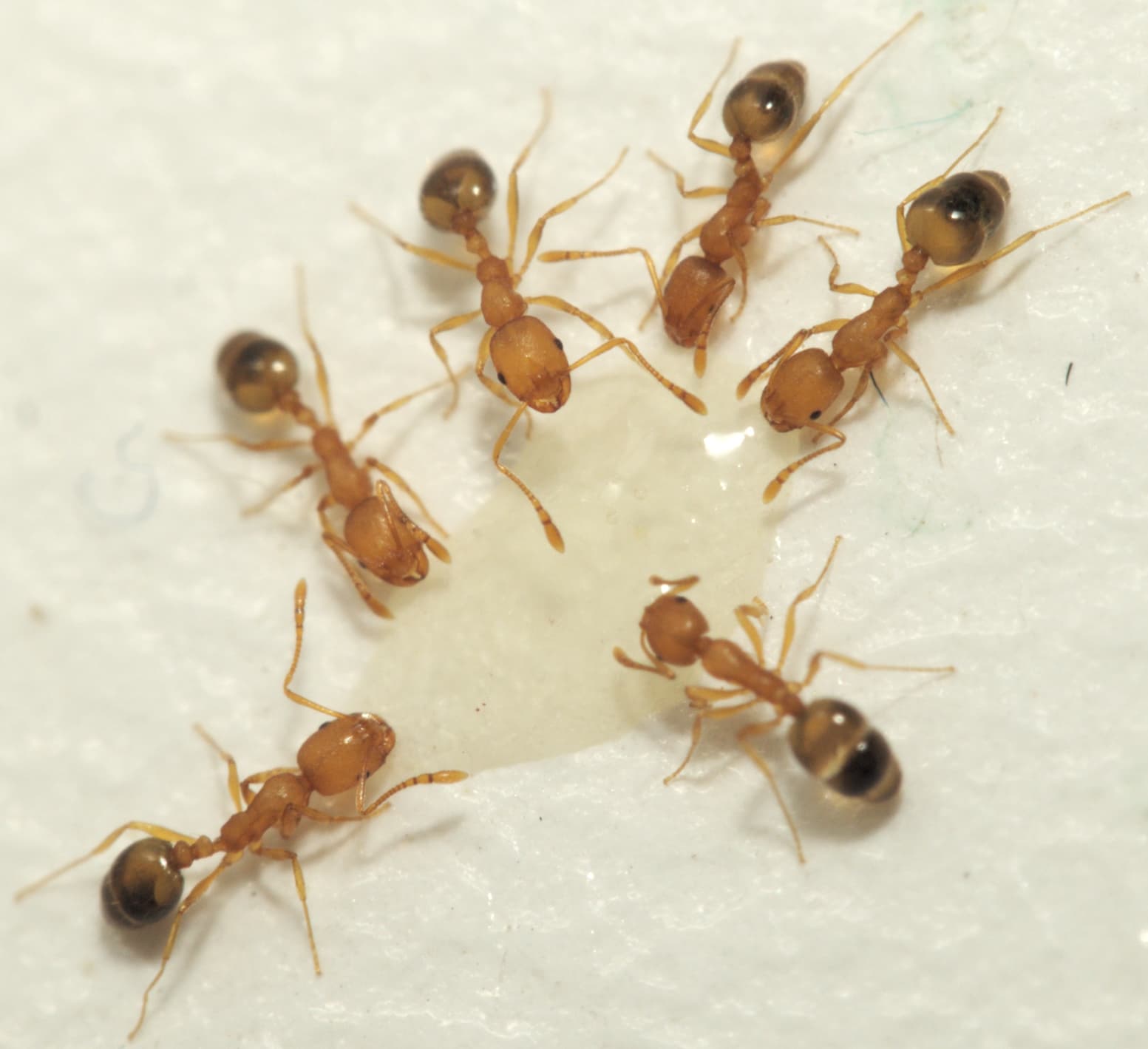Pharaoh Ant
Monomorium pharaonis
AntsVery small yellow to reddish ant, about 1/16 inch long. Indoor species that forms large colonies with multiple queens. Extremely difficult to control as colonies bud when disturbed. Common pest in hospitals and food facilities.

Control Methods
Recommended methods for controlling this pest
| Method | Type | Effectiveness | Requirements |
|---|---|---|---|
| Pipe Penetration Sealing | Mechanical | None | |
| Cabinet Gap Sealing | Mechanical | None | |
| Sticky Trap Monitoring | Non-Chemical | None | |
| Ant Gel Bait Application | Chemical | Required | |
| Food Storage in Sealed Containers | Cultural | None | |
| Non-Repellent Residual Spray | Chemical | Required | |
| Crack and Crevice Aerosol | Chemical | Required | |
| Glue Board Monitoring Stations | Non-Chemical | None |
Common Harborage Locations
Where to find this pest during inspections
| Location | Why Found There | Priority |
|---|---|---|
| Under Kitchen Sinks | Moisture from leaks and condensation, warmth from drain water, darkness, food debris washed down, and minimal disturbance. | Critical |
| Kitchen Cabinets | Proximity to food sources, crumbs and spills, warmth from nearby appliances, dark undisturbed corners. | Critical |
| Pantries | Concentrated food sources, packages provide harborage, often undisturbed for long periods, dry environment. | Critical |
| Behind Refrigerators | Consistent warmth from compressor motor, moisture from condensation, food debris falls behind, difficult to clean. | Critical |
| Under Dishwashers | Warmth from motor, moisture from leaks and steam, food particles, dark protected space. | High |
| Indoor Garbage Cans | Direct food source, moisture, organic waste, daily accumulation of debris. | High |
| Floor-Wall Junctions | Natural collection point for debris, provides shelter, and travel routes. | Medium |
| Pet Food Bowls | Direct food source, water source, spilled kibble attracts pests. | Medium |
Important Disclaimer: The information provided in this knowledge base is for educational and reference purposes only. Pest management professionals should always consult current product labels, Safety Data Sheets (SDS), manufacturer instructions, and applicable local, state, and federal regulations as the definitive source of truth. Product formulations, application methods, safety requirements, and regulations may change over time. This information may be out of date and should not replace professional judgment, proper training, or required licensing and certifications.